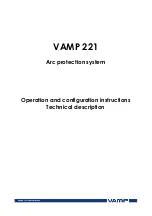
7.1.6.1
Resistive reach in forward direction
To avoid load encroachment, the resistive reach is limited in forward direction by setting
the parameter
RLdOutFw
which is the outer resistive load boundary value while the inner
resistive boundary is calculated according to equation
RLdInFw =
kLdRFw·RLdOutFw
EQUATION1185 V2 EN
(Equation 36)
where:
kLdRFw is a settable multiplication factor less than 1
The slope of the load encroachment inner and outer boundary is defined by setting the
parameter
LdAngle
.
The load encroachment in the fourth quadrant uses the same settings as in the first
quadrant (same
LdAngle
and
RLdOutFw
and calculated value RLdInFw).
The quadrilateral characteristic in the first quadrant is tilted to get a better adaptation to the
distance measuring zones. The angle is the same as the line angle and derived from the
setting of the reactive reach inner boundary
X1InFw
and the line resistance for the inner
boundary
R1LIn
. The fault resistance coverage for the inner boundary is set by the
parameter
R1FInFw
.
From the setting parameter
RLdOutFw
and the calculated value RLdInFw a distance
between the inner and outer boundary,
D
Fw, is calculated. This value is valid for R
direction in first and fourth quadrant and for X direction in first and second quadrant.
7.1.6.2
Resistive reach in reverse direction
To avoid load encroachment in reverse direction, the resistive reach is limited by setting
the parameter
RLdOutRv
for the outer boundary of the load encroachment zone. The
distance to the inner resistive load boundary RLdInRv is determined by using the setting
parameter
kLdRRv
in equation
.
RLdInRv =
kLdRRv·RLdOutRv
EQUATION1187 V2 EN
(Equation 37)
where:
kLdRRv is a settable multiplication factor less than 1
1MRK 502 048-UUS A
Section 7
Impedance protection
155
Technical manual
















































